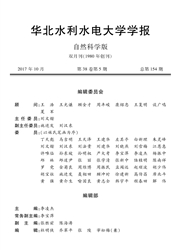

 中文摘要:
中文摘要:
采集河南省煤矿区代表城市平顶山市夏季和冬季的PM,。样品,利用电感耦合等离子质谱测定PM10中Li,V,Cr,Co,Ni,Cu,Zn,Ga,As,Rb,Sr,Mo,Cd,Sn,Sb,Cs,Ce,Ba,T1,Pb,Bi,Ti,Mn等23种元素的全样和水溶部分的浓度.研究结果表明,平顶山市PM10中全样和水溶性元素的总浓度均为冬季大于夏季,除部分地壳元素之外,来源于人为污染特别是燃煤的Ni,Cu,Zn,As,Cd,Sn,Sb,T1,Pb,Bi等元素的浓度也为冬季大于夏季.Rb,Cs,Mo,Cd,Sb,T1,Mn,Co,Ni等元素以水溶状态存在,Ga,Sn,Ce,Pb,Bi,Ti等元素多以不溶状态存在.富集因子分析结果表明,PM10中Ni,Cu,Zn,As,Mo,Cd,Sn,Sb,T1,Pb,Bi等元素主要来自人为污染,Li,V,Cr,Co,Ga,Ti,Mn等元素主要来源于地壳.因子分析结果表明,平顶山市夏季和冬季PM10主要来源于燃煤和地壳,分别占49.98%和36.97%.Ni,Cu是以生产煤炭为主的平顶山市PM10中的代表性元素.
 英文摘要:
英文摘要:
PM10 was continuously sampled in Pingdingshan City, a representative coal mine city of coal districts in Henan Province, from summer(June) and winter(December) in 2008. The concentrations of whole and water soluble fractions of 23 trace elements in-cluding Li, V, Cr, Co, Ni, Cu, Zn, Ga, As, Rb, Sr, Mo, Cd, Sn, Sb, Cs, Ce, Ba, Tl, Pb, Bi, Ti and Mn presented in PM10 were determined using an inductive coupled plasma-mass spectrometry (ICP-MS). The results showed that the total concentration of these whole and water soluble fractions elements in PM10 in winter was greater than that in summer, and the same to the concentration of Ni, Cu, Zn, As, Cd, Sn, Sb, Tl, Pb, Bi, and etc. , from anthropogenie pollution source especially fire coal, except some crustal elements; Rb, Cs, Mo, Cd, Sb, Tl, Mn, Co, Ni were in soluble state, while Ga, Sn, Ce, Pb, Bi, and Ti were mostly in nnsoluble state. The enrichment factor (EF) analysis showed that Ni, Cu, Zn, As, Mo, Cd, Sn, Sb, Tl, Pb and Bi were from anthropogenic source, while Li, V, Cr, Co, Ga, Ti, Mn were from crustal soil. The factor analysis indicated Pingdingshan airborne PM10 were main-ly originated from coal burning and crustal soil, accounting for 49.98% and 36.97% respectively. The Ni and Cu were representative elements in PM10 in coal burning area.
 同期刊论文项目
同期刊论文项目
 同项目期刊论文
同项目期刊论文
 期刊信息
期刊信息
